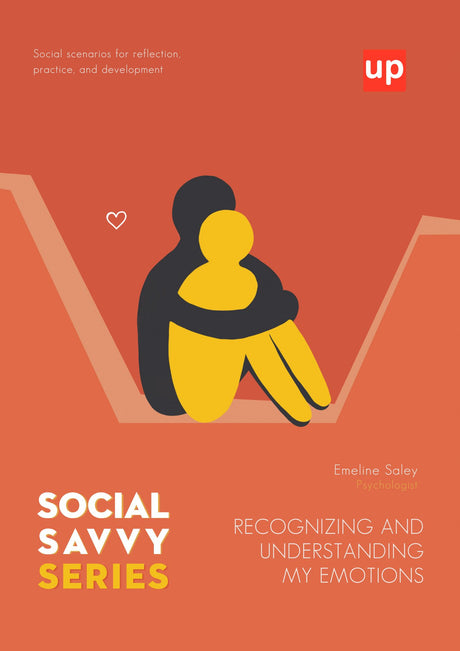While we often prioritize diet, exercise, and mental health as the cornerstones of a good life, a fourth, equally vital pillar often goes overlooked: our social health. The quality of our relationships, the strength of our community ties, and our sense of belonging are not just pleasant additions to our lives; they are fundamental drivers of our physical health, emotional resilience, and collective prosperity. A thriving community is not merely a collection of healthy individuals; it is a web of interconnected people who support, engage with, and uplift one another. In an era where digital interactions can sometimes supplant genuine human connection, understanding, and investing in social health has become more critical than ever.
Key Points
- Social health importance lies in its profound impact on individual well-being and community strength, influencing mental, physical, and emotional health.
- Strong social connections and meaningful relationships reduce risks of chronic conditions such as heart disease and high blood pressure, and contribute to longer life expectancy.
- Investing in social health through inclusive initiatives, supportive relationships, and accessible public spaces fosters safer, more resilient, and economically vibrant communities.
Social Health Importance: From Individual Resilience to Community Strength

To fully grasp the importance of social health, we must examine it from multiple perspectives. Good social wellness is a foundation for both individual and community health, as strong relationships and social connections are essential for overall well-being. This article will journey from the micro to the macro, beginning with the individual’s role in their own social wellness and expanding outward to the complex dynamics that define a community’s collective health. We will explore how personal relationships form the building blocks of larger social structures and how these structures, in turn, shape our health, safety, and economic outcomes.
Examining Social Health: A Communal Perspective
From a communal perspective, social health refers to the collective capacity of a community’s members to form positive relationships and contribute to the common good. It is measured by the prevalence of trust between neighbors, the level of civic participation, and the robustness of shared social norms. A community with high social health is one where people feel a sense of belonging and mutual responsibility. Social connectedness plays a key role in fostering these qualities, as it reflects the quality and diversity of social relationships that support feelings of belonging and well-being, helping individuals and families thrive.
The Bedrock: Individual Social Wellness and its Constituent Elements
At its core, community health begins with individual social wellness. This involves an individual’s ability to create and maintain a network of healthy relationships. Key elements include strong social bonds with family, friends, and family friends, a reliable support system for times of need, and the skills to engage in meaningful social interaction. Having a supportive friend can make a significant difference in building and maintaining this support system. Developing these personal connections is the foundational act of building a healthier community. Meaningful relationships are central to both individual social wellness and the overall health of the community.
The Collective Tapestry: Social Bonds, Networks, and Trust
Individual relationships do not exist in a vacuum. They weave together to form a collective tapestry of social networks that crisscross a community. These networks facilitate the flow of information, support, resources, and other social connections. When these social bonds are strong and built on a foundation of mutual trust, the entire community benefits from increased cooperation, shared problem-solving, and a greater sense of collective identity and purpose.
Social Health as a Foundational Pillar of Social Determinants of Health (SDOH)
Public health experts increasingly recognize social connection as one of the most critical Social Determinants of Health (SDOH)—the conditions in the environments where people are born, live, learn, work, and age that affect a wide range of health outcomes. A person’s social environment, including their support network and level of social integration, can have as much impact on their well-being as their access to healthcare or their economic stability. In particular, healthcare access is a critical factor in overall health outcomes, yet it often receives less attention compared to other health concerns despite its significant role.
Elevating Mental and Emotional Well-being Across the Community
A socially connected community is a mentally resilient one. Strong social support acts as a powerful buffer against stress, anxiety, and depression. When people feel seen, heard, and valued, their mental health improves. Social support not only enhances mental health but also contributes to better physical and mental health outcomes, including increased longevity and reduced risk of disease. This collective well-being reduces the strain on the healthcare system and fosters an environment where individuals feel safe seeking help, knowing they are part of a supportive community fabric.
The Profound Impact: How Social Health Cultivates a Flourishing Community
The effects of strong social health ripple outward, creating a virtuous cycle. A community rich in human connection experiences lower crime rates, better educational outcomes, and greater economic mobility. People are more likely to look out for one another, invest in local businesses, and participate in civic life, cultivating an environment of shared progress and prosperity.
Ultimately, strong social health enhances the quality of life for all community members.
Enhancing Mental and Emotional Well-being Across the Community
Beyond simply preventing illness, proactive social health initiatives enhance overall emotional well-being. By fostering positive social norms that encourage empathy, cooperation, and mutual respect, communities can create a positive emotional climate. This environment not only nurtures individual self-esteem and a collective sense of optimism, but also encourages individuals to make healthy choices for themselves and others, which are crucial for long-term mental health and community vitality.
Strengthening Physical Health and Extending Life Expectancy
The link between social health and physical health is well-documented by institutions like the National Institutes of Health (NIH). Meaningful social interaction and a strong support system are associated with a more robust immune system, lower blood pressure, and a reduced risk of chronic disease, including heart disease. Social support also helps prevent chronic conditions such as heart disease and inflammation. Research consistently shows that individuals with strong social relationships have a significantly higher likelihood of living longer, healthier lives, directly impacting a community’s average life expectancy. Strong social ties reduce the risk of early death and lower overall mortality risk. Social health plays a crucial role in determining how long and how well people live.
Fostering Economic Vitality and Robust Civic Engagement

A community's social health is inextricably linked to its economic and civic strength. When residents feel connected and trust one another, they are more likely to engage in activities that benefit the entire community.
Improving Safety, Security, and Collective Efficacy
Connected communities are safer communities. When neighbors know and trust each other, they are more likely to watch out for one another's property and well-being, a concept known as collective efficacy. This informal social control naturally deters crime and fosters a sense of security. Furthermore, research from the National League of Cities shows that strong community engagement boosts citizen satisfaction by 25% and reduces public complaints, indicating a more cohesive and functional society.
Bridging Health Disparities through Inclusive Social Health Initiatives
Health disparities often arise from unequal access to resources, but social isolation can compound these inequities. Inclusive social health initiatives—such as community gardens, intergenerational mentorship programs, and culturally relevant support groups—can help bridge these gaps. By creating opportunities for connection among diverse populations, communities can build social support networks that mitigate the negative health effects of systemic disadvantages.
The Generational Continuum: Social Health Across Lifespans and Addressing Disparities
Social health is not a static concept; its importance and expression evolve throughout a person’s life, from infancy to old age. While not everyone experiences loneliness, everyone can benefit from fostering social health and building meaningful connections. A thriving community must nurture social connection across this entire continuum.
Nurturing Child Health and Development through Community Bonds
A child's social environment is a critical factor in their development. Strong community bonds provide a protective layer of support for families, contributing to better child health outcomes. However, there are significant gaps. For instance, CDC data from 2021-2023 reveals that only 58% of adolescents report consistently receiving the social and emotional support they need, underscoring the necessity of community-level intervention.
Mitigating Health Disparities through Inclusive Social Health Initiatives
Targeted initiatives are crucial for mitigating health disparities exacerbated by social isolation. Programs that connect older adults with younger volunteers, support new parents through peer groups, or create welcoming spaces for immigrants can build essential social capital. These efforts provide a crucial support system that buffers against stress and improves access to shared resources, directly combating health inequities.
The Double-Edged Sword: Social Media's Role in Community Connection
While social media offers avenues for connection, it can also create illusions of community without genuine support. This is particularly evident among younger generations. A striking 2023 report found that 19% of young adults worldwide felt they had no one to count on for social support, a sharp increase from previous years, suggesting digital connectivity does not always translate to meaningful social relationships. In contrast, long term relationships provide a foundation for deeper social health and support that fleeting online interactions often lack.
Challenges to Community Social Health: Identifying Systemic Vulnerabilities

Despite its importance, community social health faces numerous threats, from systemic isolation to the complexities of modern communication and detrimental social influences. As social creatures, humans require meaningful social connections for both mental and physical well-being.
The Pervasive Issue: Community-Level Social Isolation and Loneliness
Loneliness is not just an individual feeling; it is a community-wide public health issue. The World Health Organization reports that approximately one in six people globally are affected by loneliness, a condition linked to increased risks of stroke, dementia, and premature death. Communities must recognize and address loneliness as a systemic vulnerability.
Navigating Detrimental Social Influences and Cultivating Salutary Relationships
Not all social connections are positive. Communities must also contend with detrimental influences, such as negative peer pressure, divisive social norms, the impact of marital strain on family stability, or toxic behaviors like angry outbursts that create fear and emotional harm. Cultivating a healthy community requires actively promoting and modeling a healthy relationship grounded in respect, trust, and effective conflict management.
A family member can play a crucial role in identifying and addressing unhealthy influences, providing support, and helping maintain overall wellbeing.
The Dual Nature: Social Media's Influence on Community Connection
Expanding on its role, social media's algorithms can foster echo chambers that divide communities and promote a culture of comparison that erodes mental health. However, these same platforms can be harnessed to organize local events, share vital information, and connect individuals with niche support groups, making digital literacy a key component of modern social health.
Leveraging Local Institutions and Support Systems
A significant challenge is the underutilization of existing community assets. Libraries, schools, community centers, and faith-based organizations are often well-positioned to be hubs of social connection. However, a lack of awareness, funding, or strategic coordination can leave these valuable resources operating below their full potential.
Cultivating a Socially Healthy Community: Strategic Imperatives
Addressing these challenges requires a deliberate and strategic approach. It involves a multi-faceted effort that combines physical infrastructure, cultural norms, individual skill-building, and institutional support to create a resilient social ecosystem.
Investing in Accessible Public Spaces and Shared Experiences

The foundation of a connected community is often its physical environment. Public spaces like parks, plazas, and libraries serve as "community living rooms" where spontaneous social interaction can occur.
Reinforcing Positive Social Norms and Fostering Prosocial Behavior
Communities thrive when positive social norms, such as helping neighbors and volunteering, are encouraged and celebrated. Encouragingly, these behaviors are common, with recent U.S. Census Bureau data showing that 54.2% of Americans provided informal help to their neighbors. Reinforcing this culture of mutual support strengthens the social fabric and builds collective resilience.
Empowering Individuals with Social Competence and Interpersonal Skills
Strong communities are built by individuals equipped with the skills to navigate complex social landscapes. This includes fostering assertive skills for clear communication, teaching effective conflict management, and promoting an understanding of non-verbal cues like body language. Equipping citizens with these tools empowers them to build and maintain healthy relationships.
Leveraging Local Institutions and Robust Support Systems
To maximize their impact, local institutions must be intentionally leveraged as hubs for connection. This means designing library programs that encourage interaction, using schools for community events after hours, and supporting non-profits that build social networks. Formal volunteering is a powerful tool in this effort, with around 28.3% of adults participating in such activities and building valuable social bonds in the process. These social connections offer significant health benefits, including improved physical health, greater longevity, and enhanced overall well-being.
Promoting Inclusivity and Diverse Social Interactions
A truly healthy community is an inclusive one. It is essential to create opportunities for people from different backgrounds, ages, and cultures to interact. These diverse social interactions break down prejudices, build broader understanding, and enrich the entire community. Initiatives that promote cross-cultural dialogue and intergenerational activities are not just beneficial—they are essential for creating a cohesive and resilient society.
Nurturing Loved Ones: Strengthening Family and Close Relationships
Nurturing loved ones is a vital part of maintaining strong relationships and supporting overall social health. Healthy relationships with family members and close friends provide a foundation of emotional support, social connections, and a deep sense of belonging. Research shows that people who invest in supportive relationships with loved ones experience better mental and physical wellbeing, and are at a lower risk for serious illness and early mortality. Prioritizing quality time—whether it’s sharing meals, engaging in meaningful conversations, or participating in activities like walking groups, book clubs, or tai chi—helps build healthy relationships and strengthens social bonds. Practicing active listening and encouraging open communication are essential skills for deepening these connections. By making time for family and friends, individuals not only enrich their own lives but also contribute to the overall health and resilience of their communities. Strong relationships with loved ones are truly a vital part of a fulfilling and healthy life.
Healthy Habits for Wellness: Daily Practices that Build Social and Emotional Strength

Developing healthy habits is essential for building both social and emotional strength. Simple daily practices—such as regular physical activity, balanced nutrition, and getting enough sleep—can significantly improve physical health and mental wellbeing. Engaging in physical activity with others, like joining a sports team, participating in a walking group, or taking a fitness class, not only boosts physical health but also helps forge new social connections and encourages communication. Practicing self care through activities like meditation, yoga, or mindful relaxation can reduce stress and enhance emotional wellbeing, making it easier to maintain positive relationships. These healthy habits support overall health and help individuals develop stronger social ties, leading to a more connected and resilient life. By making these practices a regular part of daily life, people can foster better mental health, build lasting relationships, and contribute to a healthier, more vibrant community.
Measuring Success: Indicators of Community and Individual Social Wellness
Measuring social wellness is key to understanding how well individuals and communities are thriving. Important indicators include the strength of social connections, the availability of social support, and a sense of belonging within the community. Research shows that communities with strong social ties and high levels of support experience better health outcomes, lower mortality rates, and improved overall wellbeing. On an individual level, factors such as emotional wellbeing, self-esteem, and social skills are valuable measures of social wellness. By regularly tracking these indicators, both communities and individuals can identify strengths and areas for growth, allowing for targeted interventions that promote social wellness and better health. This ongoing assessment ensures that efforts to build social ties and support networks are effective, leading to healthier, more connected communities.
Conclusion
The evidence is clear: social health is an indispensable component of a thriving community. It is the invisible architecture that supports our collective physical health, strengthens our mental well-being, and drives our economic and civic vitality. Moving forward, a paradigm shift is needed. We must view investing in social connection with the same urgency and importance as we do funding healthcare or maintaining infrastructure.
For individuals, this means making a conscious effort to nurture relationships and engage with neighbors. For communities, it requires a strategic commitment to creating inclusive public spaces, reinforcing prosocial norms, and leveraging local institutions to foster a deep sense of belonging for every resident. By weaving a stronger social fabric, we build communities that are not only healthier but also more resilient, equitable, and prepared to face the challenges of the future together.
Frequently Asked Questions
What is social health and why is it important?
Social health refers to the ability to form and maintain meaningful relationships and social connections that contribute to overall well-being. It is important because strong social ties improve mental and physical health, reduce the risk of chronic illnesses, and enhance quality of life.
How do social connections impact physical and mental health?
Social connections provide emotional support, reduce stress, and encourage healthy behaviors, which collectively lower risks of heart disease, high blood pressure, depression, and other chronic conditions. They also contribute to longer life expectancy and better mental resilience.
What are some ways to improve social health?
Improving social health can involve nurturing intimate relationships, maintaining friendships, spending time with loved ones, engaging with co-workers, and participating in community activities. Developing communication skills and practicing self-care also support healthier social interactions.
Can social health affect community well-being?
Yes. Communities with strong social health experience lower crime rates, better educational outcomes, and greater economic vitality. Inclusive social initiatives and accessible public spaces foster social connectedness and collective resilience.
How does social health change across a person’s lifespan?
Social health evolves throughout life, from childhood through older adulthood. Maintaining supportive relationships at every stage is vital for emotional and physical well-being, and targeted community programs can help address social isolation and disparities.
What role does self-care play in social health?
Self-care enhances physical and mental well-being, which in turn supports the ability to build and maintain healthy relationships. Prioritizing self-care reduces stress and improves emotional regulation, making social interactions more positive and resilient.
How can technology influence social health?
Technology and social media can both connect and isolate. While they offer opportunities for maintaining relationships and finding support, they can also create superficial connections. Balancing online and face-to-face interactions is key to fostering genuine social health.
Why should social health be considered alongside physical and mental health?
Social health is a foundational pillar that influences both physical and mental health outcomes. Recognizing it alongside other health dimensions encourages a holistic approach to well-being and promotes longer, healthier, and happier lives.
Original content from the Upbility writing team. Reproducing this article, in whole or in part, without credit to the publisher is prohibited.
References
-
Centers for Disease Control and Prevention (CDC). Social Connectedness and Health. Available at: https://www.cdc.gov/social-connectedness/about/index.html
-
National Institutes of Health (NIH). Social Wellness Toolkit. Available at: https://www.nih.gov/health-information/your-healthiest-self-wellness-toolkits/social-wellness-toolkit
-
HealthHub HIF. What is Social Health? Definitions, Examples and Tips on Improving Your Social Wellness. Available at: https://healthhub.hif.com.au/mental-health/what-is-social-health-definitions-examples-and-tips-on-improving-your-social-wellness
-
Killam, Kasley. The Art and Science of Connection: Why Social Health Is the Missing Key to Living Longer, Healthier, and Happier. The Guardian, June 2024. Available at: https://www.theguardian.com/wellness/article/2024/jun/14/what-is-social-health
-
National League of Cities. Community Engagement and Public Satisfaction Studies. Available at: https://www.nlc.org
-
U.S. Census Bureau. Volunteering and Civic Life in America Report. Available at: https://www.census.gov/data/tables/2018/demo/volunteering/cps-2018.html
-
World Health Organization (WHO). Loneliness and Social Isolation as Public Health Issues. Available at: https://www.who.int/news-room/feature-stories/detail/loneliness-and-social-isolation-a-public-health-challenge
-
Harvard T.H. Chan School of Public Health. The Health Benefits of Strong Relationships. Available at: https://www.hsph.harvard.edu/news/hsph-in-the-news/strong-relationships-health-benefits/
-
Gallup. Global Social Isolation and Loneliness Statistics. Available at: https://news.gallup.com/poll/248837/loneliness-rise-globally.aspx
-
National Institutes of Health (NIH). Social Relationships and Mortality Risk: A Meta-analytic Review. Available at: https://www.ncbi.nlm.nih.gov/pmc/articles/PMC3150158/









